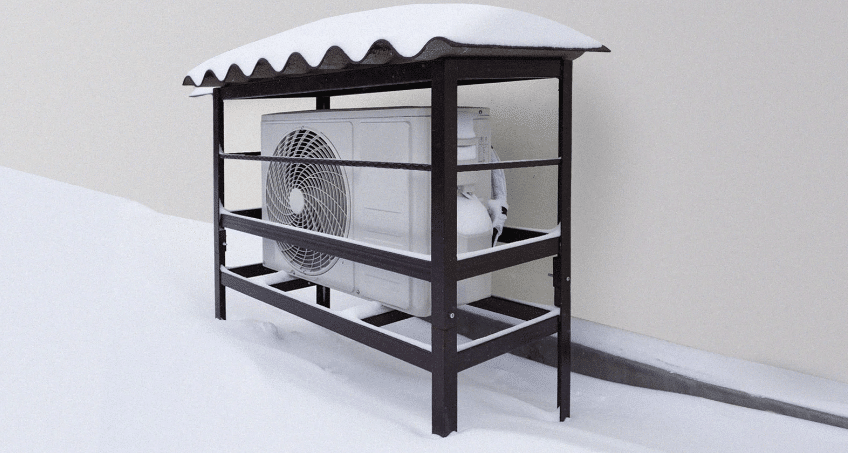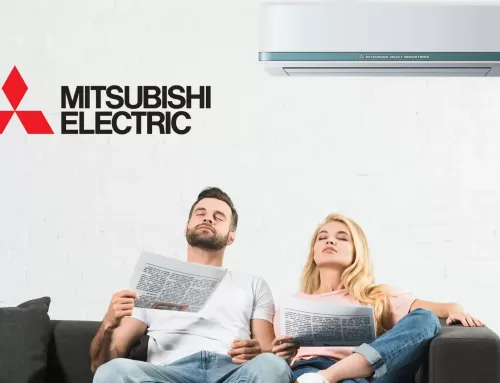Are Heat pumps effective in cold? Some people have referred to these heating and cooling systems as the “most neglected climatic solution.” They are now able to function even when the temperature is much below freezing.
In recent times, there has been a lot of focus placed on heat pumps, which are defined as heating and cooling systems that are totally powered by electricity. The “most ignored climate solution” and “an response to heat waves” are both phrases that have been used to describe them. And the technology is at long last enjoying a surge in popularity all across the world. In 2011, 117 million units were installed all around the world, which is an increase over the 90 million installations in 2010. Heat pumps, which can easily be fueled by renewable energy, offer to provide a road to carbon-free home heating even while temperatures continue to increase and emissions of greenhouse gases continue to climb. Bill McKibben, an environmental campaigner, has proposed shipping heat pumps to Europe to help wean the region off of its dependence on natural gas imported from Russia.

But despite this worldwide surge in popularity, heat pumps in the United States are still hampered by a misconception that has plagued them for decades: that their technology is ineffective when the temperature drops below 30 or even 40 degrees Fahrenheit. This misconception has plagued heat pumps for decades. Even on Google, the query “Do heat pumps function in cold weather?” is one of the most popular searches.
Andy Meyer, a senior program manager for the independent state agency Efficiency Maine, has spent the better part of the past decade dispelling this myth for inhabitants of one of the states in the United States that consistently ranks among the coldest.
He stated that in 2012 there were two distinct groups of individuals living in the state of Maine. “Those who were unaware of what heat pumps were, as well as those who were aware that they did not function when it was cold.” This fear, however, “is not at all true for high-performance heat pumps” now, he explained, even if it may have been valid many years ago.
Both the name and function of air-source heat pumps, which are one of three types of heat pumps along with geothermal and water-source heat pumps, are problematic. (A short research conducted in 2020 by the heating technology business Sealed found that around 47 percent of householders in the Northeastern region of the United States had never ever heard of heat pumps.) They function similarly to air conditioning units in that they are able to remove heat from the interior of a building and pump it outside in order to provide a cooling effect. In other words, they are reversible air conditioners. However, in contrast to air conditioners, they are able to operate in the opposite direction, taking heat from the outside and delivering it inside to be used for heating a home.
The incredible effectiveness of heat pumps can be attributed to the fact that they transfer heat rather than producing it themselves. It is only possible for a gas furnace, which generates heat by burning natural gas, to achieve an efficiency of about 95 percent. A heat pump may easily achieve an efficiency of 300 or 400 percent, which means that it can produce around three to four times as much energy as it uses.
Heat pumps effective in cold years ago?
Back in those days, the technique was actually only useful in areas with rather moderate winters and summers. The first generation of heat pumps were mostly built in southern states that required air conditioning and only a little bit of additional warmth during the winter. These locations also had a higher need for heat during the summer. According to Ben Schoenbauer, a senior research engineer at the Center for Energy and Environment, or CEE, in Minnesota, “They really gained momentum in places where it wasn’t cold.”
However, over the course of the last decade or so, heating companies have begun developing a new generation of heat pumps that are equipped with “inverter-driven variable-speed compressors.” This is a mouthful of a term that, in essence, provides the heat pump with the ability to transport heat from cold outdoor air in a more expedient manner.
Technology started advancing
Soon after, manufacturers started making high-performance heat pumps that were able to keep a house comfortable even when the temperature outside was as low as -31 degrees Fahrenheit. (Even when temperatures are much below zero, there is still a certain amount of heat in the air that is found outside.) The effectiveness of a heat pump does decrease as the temperature drops, but high-end models may still achieve efficiency ratings of over 100 percent even when the outside temperature is well below freezing. And in recent years, those of the areas in the US that experience the harshest winters have made significant investments in the technology. A research that was published in Environmental Research Letters found that heat pumps have the potential to cut CO2 emissions in 70 percent of households throughout the country. Homes that are heated by fuel oil or electric heaters that are inefficient stand to profit the most from this technology. Even in more frigid regions like New York, Massachusetts, and Maine, utilities and states have begun providing financial incentives to residents who install heat pumps through the use of rebate programs. There are a number of environmental organizations and state authorities that are putting in a lot of effort to persuade locals that high-quality heat pumps can perform well in chilly environments.
That movement is one that Efficiency Maine has been a part of. Meyer stated that early on, locals had a high level of skepticism over the ability of a straightforward electric gadget to keep people warm in the icy circumstances of the state. However, Efficiency Maine worked to recruit installers, promoted heat pumps via social media and radio, and published research and reports demonstrating their potential usefulness. According to Meyer, “It all started in Northern Maine, which is a very small and tightly connected town.” As soon as a handful of individuals began using heat pumps, they started informing their friends, who then informed their friends about it, and so on. Rebates have been provided for a total of 100,000 heat pumps in Maine, according to Meyer, who works with Efficiency Maine. This is despite the fact that there are fewer than 600,000 occupied dwelling units in the state. The rate of heat pump installations per capita in Maine is presently greater than it is in the majority of European nations.
There are other groups that are engaged in similar activities. They also keep a list of contractors who have been verified to install the systems. The Center for Energy and Environment in Minnesota has created a collaboration with utilities to assist raise the adoption of heat pumps in the state, and they are also responsible for maintaining the list. The Northeast Energy Efficiency Partnerships is a nonprofit organization established in Massachusetts that provides information for customers and installers. One of these resources is a list of air-source heat pumps that function well in the climate conditions of Northeastern states. Even in Alaska, where the average high temperature during the winter months is only around 23 degrees Fahrenheit, heat pumps are being installed in some homes.
Installing heat pumps may save you money, which is one of the many advantages of doing so. The majority of residences in the state of Maine are heated with either fuel oil or propane. According to Meyer, the cost of operating a heat pump is now one-third the cost of using propane and one-half the cost of using oil. According to the research conducted by Efficiency Maine, this has the potential to save yearly energy expenses for households by up to several thousand dollars. Comparatively, heating with a conventional electric or gas furnace was shown to result in annual savings of between $349 and $764 for residents of Minnesota who had heat pumps installed. The study was conducted in 2017 by CEE.
There are a few important qualifications. According to Lacey Tan, a manager for the carbon-free buildings program at the energy think tank RMI, heat pumps still carry a price premium: Some installers aren’t yet confident with how they operate, so they try to decrease the risk they take on by raising the expenditures that are incurred upfront. Some homes in colder areas could benefit from having a backup heating system, either for the days that are very cold or in case there is a problem with the electricity. (Mr. Meyer claims that a significant number of households in the state of Maine utilize wood stoves as a backup for their heat pumps.)
However, many industry professionals predict that as more households become aware of the recent developments in the technology, the sale of cold-weather heat pumps will increase. According to Meyer, Mainers who install heat pumps naturally tend to share their experience with their friends and family after gaining positive feedback. Jokingly, he stated, “We have almost 100,000 salesmen who have already acquired heat pumps.” Not too shabby for a state with a reputation for residents who “don’t work in the cold.”






Leave A Comment